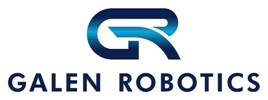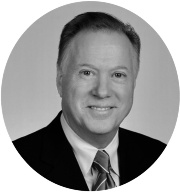|
Galen Robotics, Inc. |
||
|
October 8, 2018 Issue |
||
|
CEOCFO MAGAZINE |
||
|
|
||
|
Q&A with Bruce Lichorowic, President and CEO of Galen Robotics, Inc. bringing to market a Microsurgery Robotics Platform that assists Surgeons during Brain, ENT and Head and Neck Procedures by Holding the Instruments Steady, while Remaining Under Control of the Surgeon |
||
|
President & Chief Executive Officer
www.galenrobotics.com
Interview conducted by: Lynn Fosse, Senior Editor, CEOCFO Magazine, Published – October 8, 2018
CEOCFO: Mr. Lichorowic, what is the idea behind Galen Robotics, Inc? Mr. Lichorowic: Galen Robotics is a spinoff from the Johns Hopkins University Robotics Lab in Baltimore, headed by the father of surgical robotics, Dr. Russell Taylor. There are many important inventors, but the most recognized is Dr. Taylor. He has been in robotics for thirty years. His legacy includes a library intellectual property at IBM, which Computer Motion purchased in the 90’s, and later merged with Intuitive Surgical, and he also developed the LARS and ROBODOC. Dr. Taylor’s IP is in almost every surgical robot in use today.
For the last six years Dr. Taylor developing a robot for some of the most difficult surgeries, which include brain surgery, ENT and head and neck surgery. Many of these surgeries use a minimally invasive approach, sometimes referred to as “keyhole surgery,” where surgeons operate through small opening with long instruments and on very delicate tissue. There are no “re-dos” in some of these surgeries. For example, doing a cochlea ear implant a small error could leave a patient without a sense of smell, control over their facial muscles, or completely deaf. Holding instruments stable sometimes is a challenge because the surgeon’s own heartbeat can move the surgical tool just enough to limit their dexterity. The Galen Robot is intended to assist in these procedures by holding the instruments steady, while remaining entirely under the surgeon’s control.
CEOCFO: What is the technology at Galen? What have you developed? What are you in the process of developing? Mr. Lichorowic: What has been developed is known as a “cooperative robot” or “Cobot”. A Cobot is a robot that interacts with the surgeon in real time, as opposed to a robot that may operate based on a pre-defined plan. It is similar to power steering in a car. The car is not steering, you’re steering it, but the power steering is assisting you as it senses your motion. It is a high-precision robot designed for microsurgery. Many surgeons desire some assistance holding an instrument while they work, often for many hours around delicate anatomy. In some cases, this may be to assist as a “third hand,” with the robot holding an instrument like an endoscope, while the surgeon remains free to operate with both hands. The robot doesn’t take over an operation and it doesn't interfere with work flow. The surgeon continues to use the instruments with which they are familiar, and the robot assists by holding it with them. The anticipated benefits are on a spectrum: When holding a light and long instrument, the main benefit is probably tremor control while when holding a heavier instrument, the benefit is to reduce hand-fatigue and improve overall ergonomics.
CEOCFO: What goes into the development? How do you develop a robot? Mr. Lichorowic: As mentioned, this was done in the Johns Hopkins Robotics lab with grant funding, and thousands of man-hours. A Ph.D dissertation was even written on it. What goes into it is a ton of research and trial-and-error with different technologies. You can only get that kind of deep learning on a long-term research project either from a national or major university lab.
CEOCFO: Where does Galen come in? Mr. Lichorowic: Our company was formed in 2016 to continue development and prepare the Galen robot for commercialization. That means getting the system ready and preparing it for regulatory clearance and manufacturing. The technology transfer process hands over the results of the research and early development, and Galen becomes the commercial entity bringing the robotic system to market.
CEOCFO: How do you get a patient to let a doctor use this or try this? How do you go from the concept to trying it when it is such a delicate and complicated procedure anyway? Mr. Lichorowic: Right now, hospital administrators are saying that patients prefer robotic assistance with their surgeries. You can thank Intuitive’s DaVinci for helping educate the public over the past 20 years. Today, if you ask a patient, “Would you like your surgeon to use a robot for your surgery” over 60% will say, yes. Patients are going to hospitals and asking their surgeons, “Do you have a DaVinci, or do you have a robot to help during the surgery?” If they say no, some patients will go elsewhere.
We are seeing hospitals bringing in robots not only for patient demand, but for the surgeons as well. Most surgeons graduating from the major medical schools in this country are robot-ready. For hospitals to attract the best and brightest, they must have the latest tools, equipment and robots.
CEOCFO: Would you tell us a little about the background of you and your team to put together all the pieces to do a commercialization as you have described? Mr. Lichorowic: Dave Saunders, the other co-founder and I are on our fourth startup. We came from the high-tech electronics and IT sector. Our steel was forged in Silicon Valley's startup environment over the past 25 years, creating and launching software/big data companies. We decided to make the move into the medical device sector six years ago, to make a greater contribution verses just producing the latest software app. My executive team has over fifty-five years of combined startup experience, 30+ years of medical experience combined, and numerous patents filed by our various team members. Basically, we’re used to working and thinking in six-month periods, because of the fast-changing environment.
CEOCFO: What kind of training will the surgeon need? Mr. Lichorowic: I don't want to sound sarcastic, but what kind of training did we need for power steering? Many of us grew up without power steering, so once power steering came available it helped us drive better and easier. It's the same for surgeons, who are already performing admirably in their procedures. We will have training centers in place to bring in surgeons for hands-on training along with certification programs to ensure every surgeon is properly trained and up-to-speed on the latest release.
CEOCFO: What has been the response from the medical community who were aware of what you are doing? Mr. Lichorowic: We have given demos of the commercial prototypes to many otolaryngologists and neurosurgeons, using simulated anatomy and models. We ask; “What do you think? How would you use the robot? What procedures would you use the robot for?” The response has been overwhelmingly positive and most want to know when the system is going to be ready for further studies and training. Many of these surgeons have even said, “Finally there is a robot built for us!”
CEOCFO: Are you funded for the next year or so or will be you reaching out to investors or potential partners? Mr. Lichorowic: We are just opened up our Series A round. There are many interested parties that want to fund us, so we have the advantage of being able pick who we want as our investors. We’ve also had some significant organizations fund us during our Seed rounds who wish to continue investing with us.
CEOCFO: What surprised you throughout the process as you Galen Robotics has evolved? Mr. Lichorowic: The quality of the student body, both under and post-grad, at Johns Hopkins has been excellent. We were able to use interns from Johns Hopkins under Dr. Taylor's guidance and move the project forward well under our original budget. Dr. Taylor, and the faculty have a very seasoned view towards applied technology and their influence has a very positive impact on the students. They all think in terms of how their research could be applied in the field. My CTO and co-founder Dave Saunders said, “I think we may want to double our interns next summer.” The minute the first four graduated we gave them offer letters. Now we have close to twelve interns, plus the four former as full-time employees. I'll be the first to tell you that we will make our headquarters on Baltimore. We had planned it for Silicon Valley like our last company but given the quality of the students and the response from the school, what a pleasant surprise! Further, I cannot say enough good things about Dr. Taylor, Johns Hopkins Technology Ventures and the school in general. They have been an incredible group to work with. They have surpassed my expectations on all levels.
Galen has been an absolute joy to run, given in partnership with one of the top schools in the world in medical robotics. |
“We have given demos of the commercial prototypes to many otolaryngologists and neurosurgeons, using simulated anatomy and models.”- Bruce Lichorowic
Galen Robotics, Inc. 408-781-0829
|
|
|
disclaimers |
||
|
|
||
|
Surgical Robotic Systems, Galen Robotics, Inc., Robots for Microsurgery, Bruce Lichorowic, Bringing to market a Microsurgery Robotics Platform that assists Surgeons during Brain, ENT and Head and Neck Procedures by Holding the Instruments Steady, while Remaining Under Control of the Surgeon, CEO Interviews 2018, Healthcare Companies, Technology Company, surgical robotics for otolaryngology and microsurgery, surgical robotic companies, surgical robotic arm, robotics and telesurgery in otolaryngology, robots for otolaryngology, robots in ENT otolaryngology, robotics for microsurgery, minimally invasive ENT surgery, robotic ENT surgery, robotic ENT procedures, Galen Robotics, Inc. Press Releases, News, Events |
||
|
|
||


 Bruce
Lichorowic
Bruce
Lichorowic